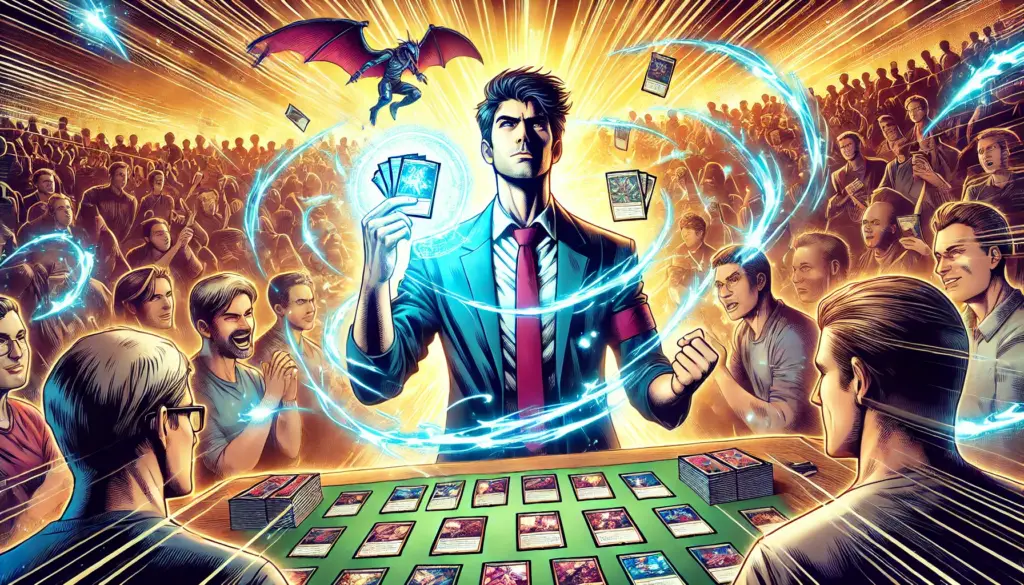
The global market for trading card games (TCGs) is growing at an astonishing pace. While video games and NFTs steal headlines, physical card games like Pokémon, Yu-Gi-Oh!, Duel Masters, One Piece, and Magic: The Gathering (MTG) are dominating collector shelves, tournament halls, and resale platforms.
But what keeps these cardboard empires so strong in 2025? Let’s break it down with some numbers and branding insights.
📊 Comparing Japan’s Top TCGs: Market, Audience, and Strategy
| Game Title | Launch Year | Total Cards Printed | Estimated Annual Market (JP) | Core Audience | Global Popularity | Key Branding Points |
|---|---|---|---|---|---|---|
| Pokémon | 1996 | 10+ billion (worldwide) | ¥200+ billion | Children, Adults, Collectors | 🌍 Very High | Nostalgia + rarity + broad media tie-ins |
| Yu-Gi-Oh! | 1999 | 35+ billion (worldwide) | ¥100–120 billion | Teens, Competitive Players | 🌍 High | Anime-backed lore + strategic gameplay |
| Duel Masters | 2002 | Not public, est. ~3B | ¥20–30 billion | Children, Light Players | 🇯🇵 Japan-centric | Simplified mechanics + bold visuals |
| One Piece Card Game | 2022 | 1+ billion (as of 2024) | ¥30–40 billion (rapid growth) | Cross-generation fans | 🌍 Growing fast | Story-driven packs + limited art |
| MTG (Magic: The Gathering) | 1993 | 22+ billion | ¥40–50 billion (JP market only) | Adults, Pro Players, Collectors | 🌍 Very High | Legacy depth + competitive play + art |
🔍 Why Players Keep Coming Back: Branding Breakdown
1. Scarcity and Collectibility
- Cards are intentionally printed in rarity tiers: Common, Rare, Super Rare, and Secret.
- Tournament promos, limited-edition illustrations, and region-specific releases keep collectors hunting.
2. Lore and Cross-Media Strategy
- Pokémon thrives through its anime and games.
- Yu-Gi-Oh! and Duel Masters build immersive universes through manga.
- One Piece leverages one of the most beloved anime storylines ever.
- MTG creates its own deep fantasy worlds, now expanding into Netflix and major fiction publishing.
3. Community and Tournaments
- Major global tournaments like Pokémon Worlds, Yu-Gi-Oh! WCQ, and MTG Pro Tour gather international players.
- Locally in Japan, stores run regular “booster draft” and “duel battle” events, keeping foot traffic strong.
4. Financial Investment & Art
- MTG and Pokémon have both had cards sold at auction for millions of yen.
- Unique art prints and signed artist editions elevate cards to fine collectibles.
👥 Consumer Profiles: Who’s Driving the Market?
- Casual Players: Especially in Duel Masters and One Piece.
- Competitive Gamers: Yu-Gi-Oh! and MTG offer deep strategic environments.
- Collectors & Investors: Focused on limited editions and pristine grading.
- Nostalgic Adults: Pokémon and MTG especially attract 30–40s fans returning to their childhood hobbies.
📈 The Secret Sauce: Japan’s Gacha Influence
Randomized packs activate psychological triggers. Whether it’s pulling a Charizard or a Planeswalker, the surprise element encourages continuous purchases—similar to Japan’s beloved capsule toys and gacha machines.
🔮 What’s Next for the TCG Economy?
- One Piece is growing fast enough to rival Pokémon in collector hype.
- MTG is embracing tech with online companion apps and serialized numbered cards.
- AI art and blockchain-based ownership tracking are on the horizon, possibly creating “digitally certified” physical cards.
These games are evolving without abandoning their physical roots—a key factor in why they remain resilient, even in the face of digital trends.
💡 Final Thoughts
From playgrounds to auction houses, trading cards continue to captivate hearts, wallets, and imaginations. Japan remains the beating heart of the TCG world, not just due to its creativity—but also its ability to turn cardboard into culture, and nostalgia into an economic force.
The future? Bright, bold, and still booster-sealed ✨



















































